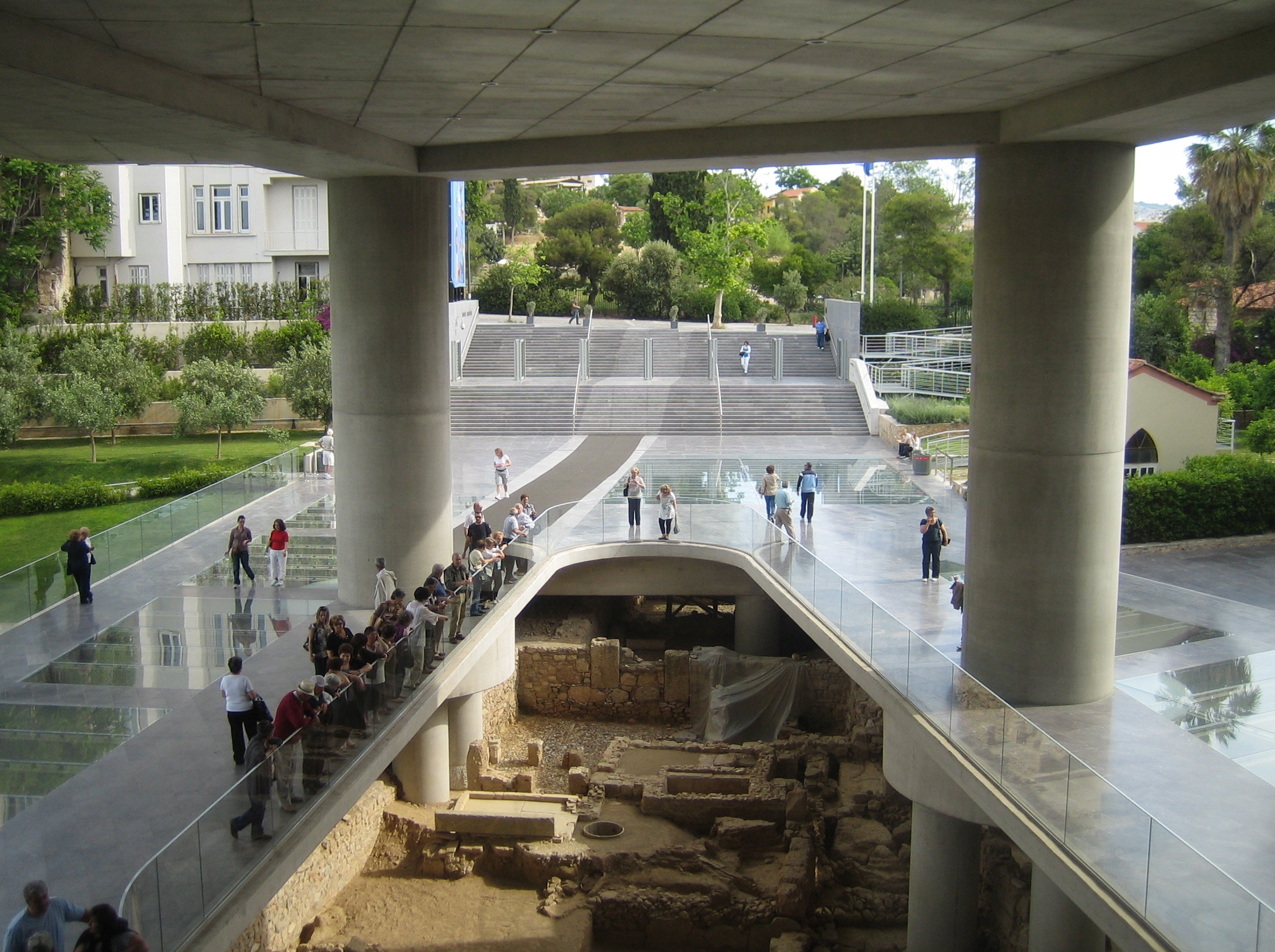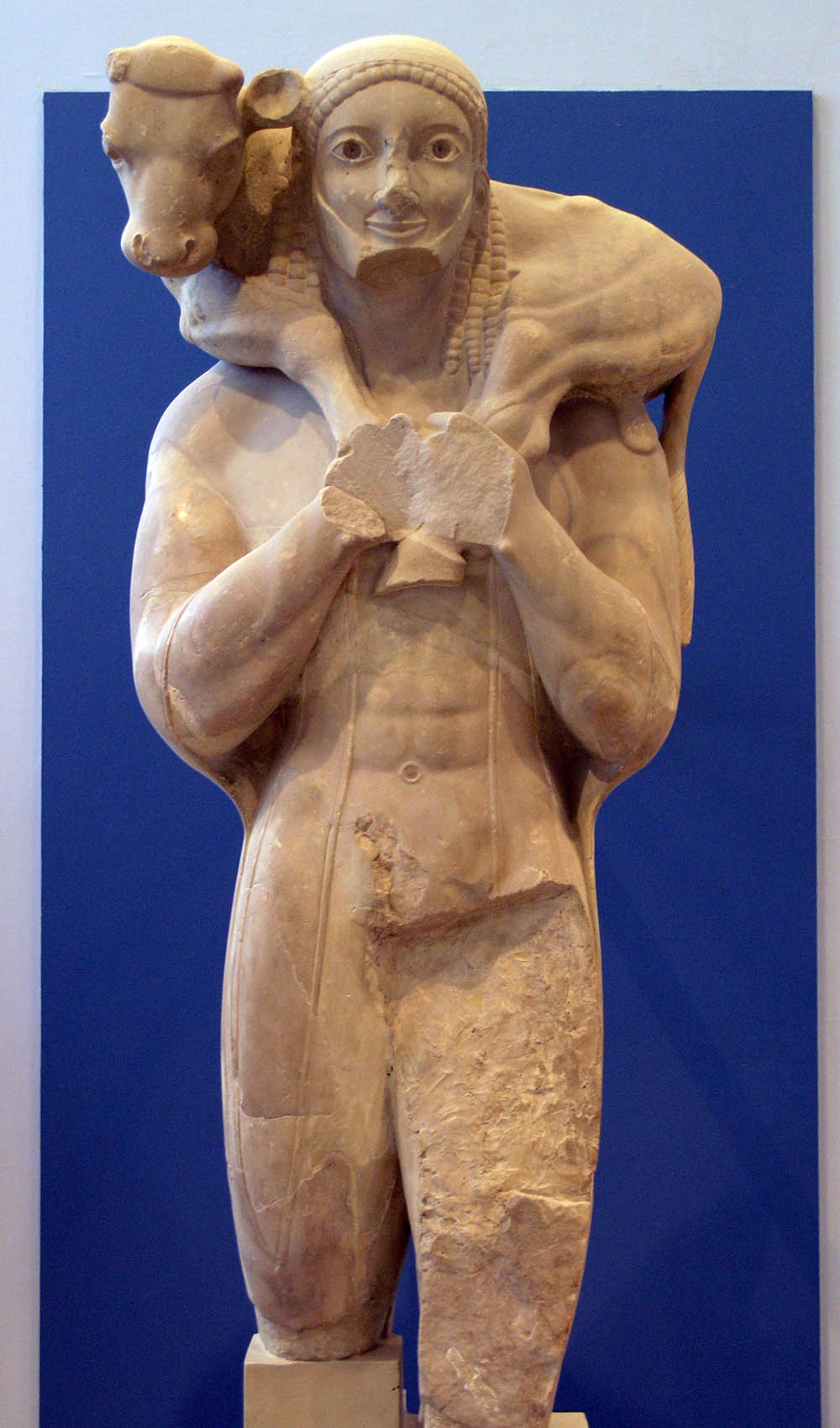Please wait ...
The Acropolis Museum is an archaeological museum focused on the findings of the archaeological site of the Acropolis of Athens. The museum was built to house every artifact found on the rock and on the surrounding slopes, from the Greek Bronze Age to Roman and Byzantine Greece. It also lies over the ruins of a part of Roman and early Byzantine Athens.

The museum was founded in 2003, while the Organization of the Museum was established in 2008. It opened to the public on 20 June 2009. More than 4,250 objects are exhibited over an area of 14,000 square meters.
The first museum was on the Acropolis; it was completed in 1874 and underwent a moderate expansion in the 1950s. However, successive excavations on the Acropolis uncovered many new artifacts that significantly exceeded its original capacity.

An additional motivation for the construction of a new museum was that in the past, when Greece made requests for the return of the Parthenon Marbles from the United Kingdom, which acquired the items in a controversial manner, it was suggested by some British officials that Greece had no suitable location where they could be displayed. The creation of a gallery for the display of the Parthenon Marbles has been key to all recent proposals for the design of a new museum.
There had been several competitions to get The design by Bernard Tschumi was selected as the winning project in the fourth competition. Tschumi's design revolves around three concepts: light, movement, and a tectonic and programmatic element.

Together these characteristics "turn the constraints of the site into an architectural opportunity, offering a simple and precise museum" with the mathematical and conceptual clarity of ancient Greek buildings.
The collections of the museum are exhibited on three levels while a fourth middle level houses the auxiliary spaces such as the museum shop, the café and the offices. On the first level of the museum there are the findings of the slopes of the Acropolis. The long and rectangular hall whose floor is sloping, resembles the ascension to the rock. Then, the visitor is found at the large trapezoidal hall which accommodates the archaic findings.

On the same floor there are also the artifacts and sculptures from the other Acropolis buildings such as the Erechtheum, the Temple of Athena Nike and the Propylaea and findings from Roman and early Christian Athens. Visitors are intended to see the latter during descent in order to keep the chronological order: they will first be directed to the top level, which displays the Parthenon marbles.
Horse (6th BC)

Moschophoros (560 BC)

Detail of a Kore (530-520 BC)
The top level of the Museum sits askew on the lower levels to achieve the same cardinal orientation of the ancient temple on the Acropolis. The spacing of the columns of the Parthenon hall is the same as that of the ancient temple, and the use of glass walls on all four exterior walls allows the natural light to illumine the Parthenon marbles as they do on the ancient temple. The 48 columns in the Parthenon hall mark the outline of the ancient temple and form a colonnade for the display of the Parthenon marbles.

Caryatids of Erechtheum
For ease of viewing, the pediment marbles are displayed at eye level in front of the end columns; the metopes are displayed on the columns, two per column, but not as high as in the ancient temple; and the frieze are displayed behind the metopes, forming a continuous band around the walls of a rectangular space set inside the columns, as in the ancient temple but not as high, again for ease of viewing. From the north side of the Parthenon hall, one can see the ancient temple above on the Acropolis.

Acropolis Kore (510 BC)

Goddess Nike (1st to 3rd century AD)
As the museum is built over an extensive archaeological site, the floor, outside and inside, is often transparent using glass and thus the visitor can see the excavations below. The museum also provides an amphitheatre, a virtual theatre and a hall for temporary exhibitions.